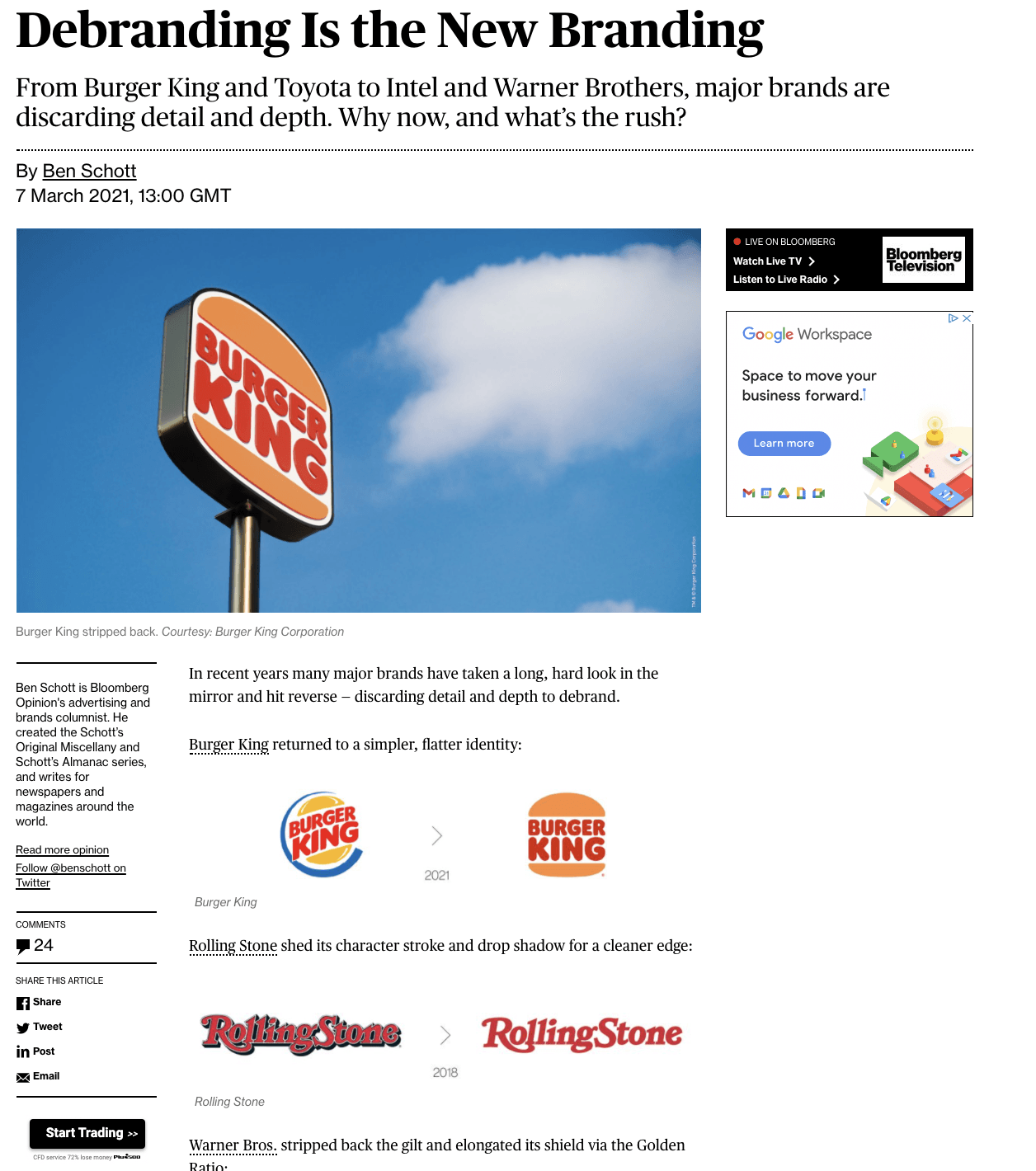Blog & Interesting Links
Welcome to our Blog and links to interesting articles
Our Good Strategy Blog
Interesting Links
Can you articulate how your business helps and what you stand for?
Doing an interview is always a good test of how well you articulate your proposition. Tamsin Daniel chats with Andrew Joy of ActionCoach about the journey to founding Atalante Marketing.
From representation and understanding your category to targeting and segmentation, strategy and tactics this is
Atalante in a nutshell!
Why the fitness industry needs to limber up:
· More than half of British people (52%) plan to continue using digital fitness services after Covid restrictions ease.
· For some, a public health crisis has also put a greater focus on the importance of fitness: in a British Heart Foundation survey, 54% of UK adults said they were determined to get more physically active as a result of the pandemic.
· [Sport England’s] research suggested 75% of women did want to exercise but a fear of judgement was stopping them.
Click here or on the image above for the full article.
Has the pandemic seen the end of ‘macho’ marketing in favour of body positivity and a more personalised and inclusive approach to fitness and fitness marketing?
A huge rise in home and app based workouts is making fitness more accessible to a more diverse group of people previously put off by the unattainable images peddled by the fitness industry.
Atalante are delighted to be working with muto.fit who offer a more supportive and inclusive approach to fitness through truly personalised, 1-1 training sessions with highly trained fitness experts.
James Tansey, Founder and CEO of Muto commented: “The fitness industry has been flogging a one size fits all solution for decades that is at best ineffective at getting most people fit and at worst alienates huge groups of people and contributes to body image issues.
"Being healthy isn’t about looking a certain way or training in a certain way it should be about feeling good and enabling you to have the kind of lifestyle that you want. Our trainers spend a lot of time getting to know our clients and we design every session around their body type, aspiration, lifestyle and the sorts of movements and exercises they enjoy and find comfortable. And that gets healthy physical and emotional results.
"We are growing because people want more from fitness, they don’t want someone telling them how they should look or making their workout a misery. The pandemic has only brought that more into focus.”
Click on the image left to link to the article.
Want to build a brand that will live and flourish for 100 years?
Apply six principles from living organisms to building resilient businesses that flourish in the face of change.
Here is an old but good Ted talk that feels particularly relevant at the moment.
Play video to the right or
click here to link.
Little Moons Founder Story
We are all a little bit fascinated by the Little Moons start-up success story.
With one eaten every second, over 320m impressions and a 2500% sales increase, it's testament to the power of social media when you have a unique product that people truly love.
Here is a great founder interview from Glamour Magazine on how they got there.
Click on the image left to link to the article.
Looking for a large, lucrative and largely untapped market in fashion?
67 percent of women in their forties and older have purchased shoes and / or clothing online at least monthly (up from 2019.)
However, nearly 50 percent of clothing buyers above 40 years old feel unrepresented in fashion marketing.
Clearly a huge opportunity that mainstream brands are not capitalising on.
Read the full article by clicking on the image to the right.
Finding food trends
How do you spot a market opportunity for a new product and then create a cult following?
According to this article about where food trends come from and how new products get 'cool' a good start is looking at what's happening on the ground in restaurants and eateries.
What ingredients and flavours are consumers showing an interest in and most importantly - why. Brands who understand this and then harness the power of advocacy and word of mouth through these 'early followers' are often the ones who succeed.
Click on the image left to link to the article.
Are you 'de-branding' or 're-branding'
There is currently a strong trend towards 'de-branding'. This is about pairing brands back to their most iconic and distinctive elements and simplified, most compelling messages. As opposed to 'rebranding' where these are changed or evolved.
Lockdown is likely to have impacted many brand's recognition and awareness (as people are out and about less, choosing ad free TV formats like Netflix and browsing less in-store). Consumers have also re-evaluated what is important to them.
There is real value in focusing in on and strengthening the proposition and brand you have vs changing everything and having to 'start again' with consumers.
Either way before doing any kind of rebrand or redesign it is essential to be super clear on what elements of your brand to carry forward to build recognition, meaning and sales.
If you are planning a re-brand or re-design over the next few months feel free to give us a call for a free, no obligation chat or advice on where to start.
Here’s a great article about how some of the top brands in the world have gone about 'de-branding' over the last year or so.
Growth and peril for marketers
Fantastic talk by Mark Ritson. He looks at data that shows the value of strategy and long term brand building to achieve brand growth. Too many brands are stuck in the 12 month planning cycle of tactical activity to prop up short term sales. This talk include evidence of how a longer term view and investment in strategic brand building is essential for true, long term growth and equity.
Mark also talks about the 'peril of purpose' and need for brands to get back to basics and ensure advertising focuses on delighting consumers and showing how brands meet their needs.
Click the image left to link to the talk.
Brands miss out on a bigger audience when consumers can’t relate
According to the Kantar’s ‘Getting Gender Right’ report, while 76% of female and 88% of male marketers think they understand consumers a whopping 76% of female and 71% of male consumers believe the way they are portrayed in advertising is ‘completely out of touch’. 30 Percent Club’s ‘Are You Missing Millions’ report also found that 51% of global LGBT consumers say “I wish I could see more ads with families like mine” and 72% of African Americans and 66% of Hispanics feel not enough brands do a good job of representing their community. 79% of over-55s feel that advertising portrays them inaccurately.
Understanding and reflecting how your consumers see themselves rather than what you see on the outside outside removes the stereotypes that real people can’t relate to and broadens your audience. Brands can do this in a disruptive and proactive way like Nike Women which has created a distinct position by fighting against gender stereotypes. Or like Diageo who are not making ads making a point about stereotypes but are proactively seeking to remove stereotypes in order to relate positively to a bigger audience.
Read the full ‘Are You Missing Millions?’ report
here
Read the full Kantar ‘Getting Gender Right’ report
here
Nike Women understand and connect with emotional needs and proactively breakdown stereotypes:
Proctor and Gamble are working on how they create more inclusive and relatable marketing:
Advertising free from stereotypes delivers stronger results for brands.
When brands remove stereotyping and inequality from their marketing they see better results, have wider appeal and create stronger equity and differentiation. The latest data from data and insights company Kantar tells us that unstereotypical advertising creates 37% more branded impact, 28% uplift in purchase intent and increases enjoyment of ads by 35%.* BrandZ, the world’s largest brand equity Database found during multi-category analysis from 2017- 18 shows that gender-balanced brands do better than brands that skew male or female. Compared to gender-balanced brands, male-skewed brands are valued on average US$9bn less.**
Read the full Kantar ‘Getting Gender Right’ report here
We love Dove’s latest campaign Project #ShowUs
70% of women globally do not feel represented by the everyday images they see in the media. Dove is working with GettyImages and Girlgaze to create the world’s largest stock photo library created by women and non-binary individuals to shatter beauty stereotypes. It is now available for the media and advertising industries to view, license and use in their next project or campaign.
Take a look at the
#Showus campaign
View Dove #ShowUs Campaign:
"The essence of strategy is choosing what not to do."
Michael E. Porter, Harvard Business School


















